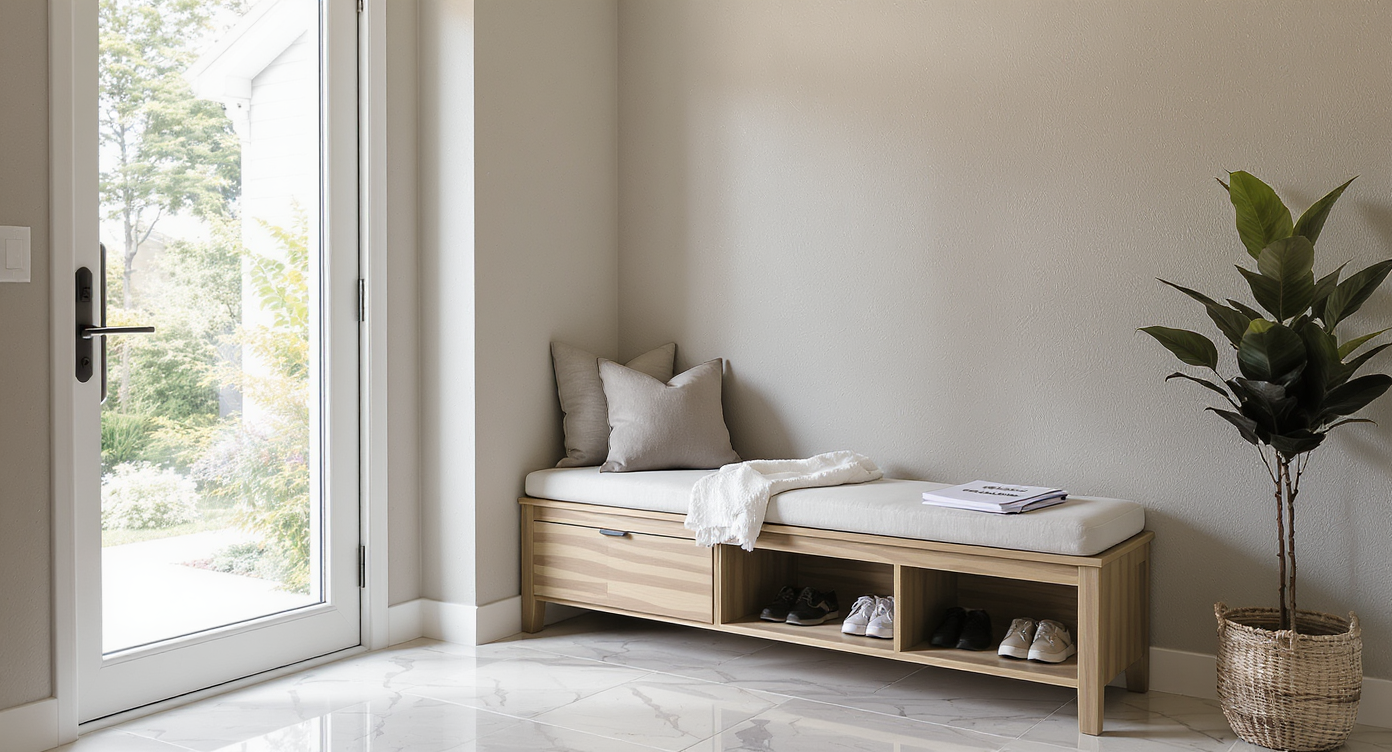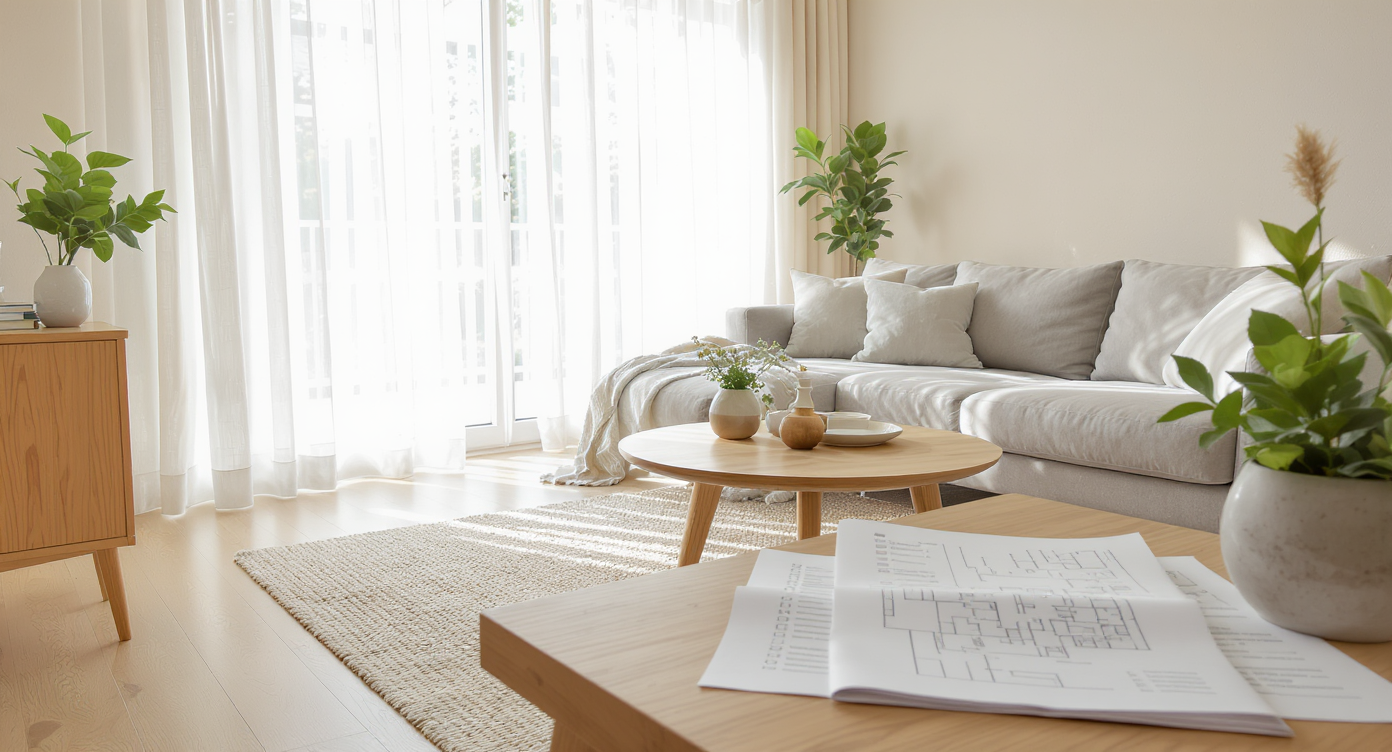TL;DR
New buyers lose money on avoidable errors like skipping a home inspection, underbudgeting maintenance, and misunderstanding homeowners insurance. Use a 1–3% of home value yearly maintenance budget, keep 2–5% for closing costs, and treat inspection contingencies as nonnegotiable. This guide breaks down common first-time home buyer mistakes to avoid and shows how to buy for the market you’re in, not the one you wish existed.
Buying your first home? Avoid the seven most expensive mistakes and keep more cash for what matters: safety, comfort, and future equity.

Starting smart with inspections and budgeting keeps first-time buyers ahead of unexpected costs.
Buying a first home is emotional. It’s equal parts possibility and paperwork. But here’s the thing: the most expensive problems are usually the most predictable. First-time home buyer mistakes like waiving the home inspection, underestimating closing costs, or taking on risky DIY projects can drain a budget before the paint dries. The fix isn’t fancy — it’s a plan. Use a clear checklist, set a home maintenance budget, and understand what homeowners insurance does and doesn’t cover. If you’re searching for common first-time home buyer mistakes to avoid, start with these seven traps and the simple moves that sidestep them. You’ll spend less time putting out fires and more time building equity.
Core strategy: Avoid these first-time home buyer mistakes (and what to do instead)
New buyers avoid costly missteps by planning for hidden costs, keeping contingencies, and buying for the market they’re in. Experts advise budgeting 1–3% of a home’s value annually for maintenance and 2–5% of the purchase price for closing costs.
- 1) Skipping the home inspection. Treat the home inspection as nonnegotiable. A standard inspection (often $350–$700) can uncover five-figure issues like roof leaks, foundation movement, or unsafe wiring. If competition is fierce, write “inspection for information only” rather than waiving it entirely.
- 2) Underestimating maintenance and repair costs. Plan a yearly reserve equal to 1–3% of the home’s value; older homes or pools may need more. Create a seasonal checklist to service HVAC, clean gutters, and test sump pumps so $200 fixes don’t become $2,000 emergencies.
- 3) Overlooking homeowners insurance gaps. Standard policies typically exclude floods, earthquakes, and sewer backups. Ask your agent, in writing, what’s excluded, your deductible, and whether you need riders for valuables or regional risks. Buying outside high-risk flood zones can lower premiums dramatically.
- 4) Waiting for the market to “get better.” Timing the market rarely works. If your finances are ready, focus on affordability today, not on guessing tomorrow’s rates. You can refinance later; you can’t rewind missed equity or rising rents.
- 5) Ignoring a good agent’s advice. A seasoned buyer’s agent helps you price offers, retain key contingencies, and negotiate credits after inspection. Choose someone who communicates clearly — then trust their strategy in bidding wars and appraisal talks.
- 6) Walking into a deal unprepared. Show up with a full mortgage preapproval, proof of funds, and a firm grasp of comps. Expect closing costs of roughly 2–5% of the purchase price, plus prepaid taxes and insurance you can’t usually roll into the loan.
- 7) Letting DIY projects spiral. Cosmetic upgrades are fair game; structural, electrical, and plumbing work belong to licensed pros. Missteps can void insurance and cost more to fix than hiring the right expert from the start.
User insight: New owners who built a dedicated “home fund” on day one — separate from emergency savings — reported the least stress when surprises surfaced.
Anecdote
A first-time buyer who capped her budget at 90% of lender approval kept contingencies and still won — then used a $6,000 credit to fund urgent electrical fixes.
Common mistakes & misconceptions first-time buyers face
Most first-time home buyer mistakes stem from assumptions about costs and coverage. A simple checklist can prevent them.
- “My mortgage is the only big monthly bill.” Not quite. Add taxes, insurance, utilities, HOA dues, lawn care, and maintenance. A quick rule: if the mortgage fits but the total monthly housing cost doesn’t, pause.
- “Homeowners insurance covers everything.” It doesn’t. Flood, quake, and sewer backups usually require separate policies. Review coverage annually and after renovations.
- “Waiving contingencies makes my offer unbeatable.” It might make it risky. Keep at least an inspection or financing contingency, or negotiate a short due diligence period to assess major systems.
- “I’ll save money by DIY-ing the reno.” Maybe — if you’re skilled and permitted. For work touching safety or code, the cheapest path is hiring licensed pros.
- “I’ll wait for rates to drop before I buy.” Rates may fall — or prices may rise. If the payment works today and you plan to stay 5–7 years, many experts suggest moving ahead and refinancing later if conditions improve.
Pro tips and expert insights for first-time home buyers
First-time home buyers can stack the odds by combining conservative budgets with strategic negotiations. Designers and real estate pros often advise planning upgrades in phases.
- Shop lenders and insurance early. Get at least three quotes for mortgages and homeowners insurance. Even a 0.25% rate difference or a higher deductible choice can change total ownership cost meaningfully.
- Use inspection findings for leverage. Ask for seller credits or repairs for major health, safety, or structural items. Document bids; even a $5,000 credit can offset closing costs or fund repairs.
- Budget to 80–90% of your approval. Lenders may approve more than is comfortable. Capping your target payment leaves room for maintenance, furnishing, and inflation.
- Phase projects. Prioritize safety and envelope issues first: roof, drainage, electrical, HVAC. A fresh coat of paint can wait; water intrusion can’t.
- Consider rate buydowns and credits. Temporary 2-1 buydowns or permanent points can lower payments. Ask for seller concessions where local norms allow.
- Create a “sinking fund.” Auto-transfer monthly into a separate home account for predictable big-ticket items — roofs (15–25 years), water heaters (8–12), HVAC (12–17).
Tools, inspiration, and suggested visuals
- Pre-closing checklist (inspection items, insurance questions, closing cost worksheet).
- Budgeting apps or a simple spreadsheet to track 1–3% annual maintenance.
- Project planners like ReimagineHome to visualize layouts, phase remodels, and estimate scope before hiring pros.
- Suggested image alt text: “First-time home buyer reviewing home inspection report and repair estimates.”
- Suggested caption: “A thorough home inspection can reveal five-figure repairs — keeping this contingency protects your budget.”
Reflection: The calmest buyers aren’t luckier; they’re prepared. They know their numbers, their must-haves, and where to compromise.
Anecdotes and real stories new buyers can learn from
Real-world stories show how small choices shape big outcomes for first-time home buyers.
- The waived-inspection wake-up call. A buyer nixed the inspection to win. Two months later, a hidden drain line failure and an aging panel cost $9,800. She now tells friends: “Bid strong — keep the inspection.”
- The maintenance fund that saved summer. A couple set aside 2% of their home’s value annually. When the AC died during a heat wave, they replaced it in 48 hours without touching emergency savings.
- The market-timing lesson. One renter waited for rates to drop. A year later, prices jumped and rents rose. When he finally bought, his payment was higher than it would have been earlier — and he’d missed a year of equity.
- The credit that covered closing costs. After inspection revealed active roof leaks, a buyer’s agent negotiated a $7,500 seller credit. The funds covered most closing costs and paid a roofer to seal everything within a week of move-in.
Visualization Scenario
Picture move-in day: utilities set, inspection punch list in hand, and a dedicated home fund ready. You’ve prioritized safety — sealing a minor roof leak, servicing the furnace, and replacing a GFCI outlet — and mapped cosmetic upgrades by season. In your living room plan, you’ve visualized furniture flow and phased a kitchen refresh for winter using ReimagineHome. The result is a calm first year: fewer surprises, smarter spending, and a home that steadily gets better without blowing the budget.
First-time home buyer FAQs
How much should I budget for home maintenance as a first-time home buyer?
Experts recommend setting aside 1–3% of your home’s value annually for maintenance and repairs, with older homes trending higher. This home maintenance budget helps avoid debt when big systems fail.
Should I ever waive a home inspection to win in a competitive market?
Skipping a home inspection is risky because it can hide major issues like foundation or electrical problems. A safer approach is to keep an inspection contingency or make it informational only to understand the home’s true condition.
What does homeowners insurance not cover for new buyers?
Standard homeowners insurance typically excludes flood, earthquake, and sewer backup damage. Buyers in risk-prone areas should consider separate policies or riders to close those coverage gaps.
How much are closing costs for first-time buyers?
Closing costs usually run 2–5% of the purchase price, plus prepaids like taxes and insurance. Request a detailed Loan Estimate early to see every fee and plan cash on hand.
Is it smart to wait for mortgage rates to drop before buying a house?
Waiting is a gamble; rates and prices move unpredictably. If today’s payment fits your budget and timeline, many advisors suggest buying now and refinancing later if rates improve.
Make your first home a financial win
The smartest first-time home buyers don’t chase a perfect market; they build a resilient plan. Keep the home inspection. Budget 1–3% of the home’s value for maintenance, expect 2–5% for closing costs, and right-size your expectations around homeowners insurance. Buy when your finances are ready, lean on a skilled agent, and phase projects so you’re investing in safety first and style second. When you’re ready to plan upgrades or visualize a room-by-room roadmap, use ReimagineHome to test layouts, scope projects, and avoid costly missteps before you spend a dollar on materials.
.svg)

.svg)









.png)